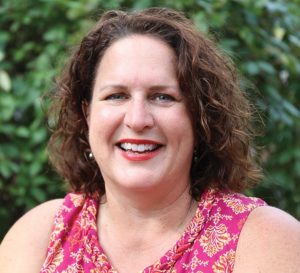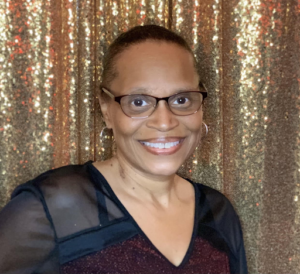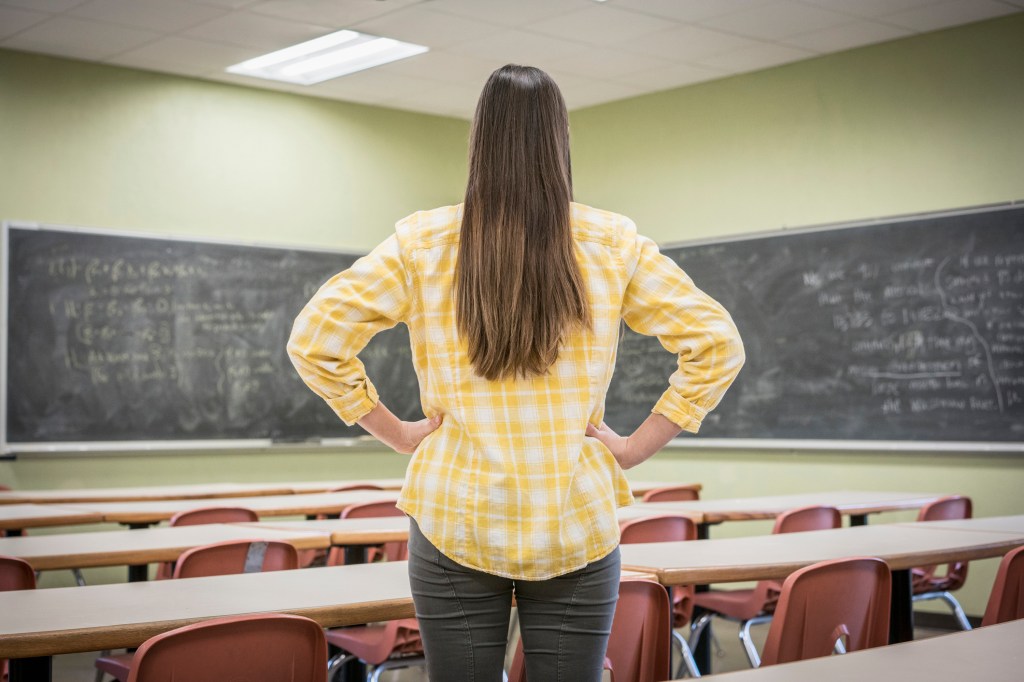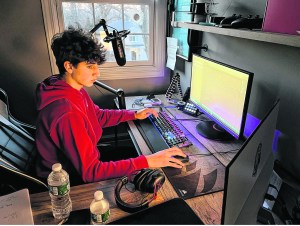From teaching children remotely during earlier waves of the coronavirus pandemic to refereeing passionate debates over whether to require children to wear masks or get the Covid-19 vaccine, educators have played a prominent role in the war on the virus.
And between the sometimes boisterous school board meetings and parent-teacher conferences, local educators have been performing a herculean task of keeping East End students from falling behind academically despite kids having been thrown off track.
Local schools are brimming with anecdotes of teachers going above and beyond to help students overcome these challenges, which is why the Long Island Press has deemed educators our People of The Year. What follows are just some of their stories.

Jennifer Wolfe, a social studies teacher at Oceanside High School, who was the 2021 New York State Teacher of the Year, spent the year traveling to events honoring the nation’s top teachers and discussing the obstacles educators are facing in the pandemic. For Wolfe, who has taught at the high school for 25 years, the biggest challenge has been remaining “filled with hope and energy” during a time when students are struggling with mental health more than ever.
“My students are incredibly traumatized, really,” she says. “Teachers are the first adults they see in the building whom many of them confide in and look to for support and guidance and joy. So you’ve gotta stay positive and present for them while continuing to do lesson plans and grading and talking to parents. All the other jobs of teachers haven’t gone away, they’ve just become harder. It’s become a much more complicated year.”
Wolfe carves out time in class for students to relax, talk among themselves, and engage in breathing exercises, she says, because she knows that their social and emotional well-being impacts their learning. She notes that the pandemic has brought to light issues in education that needed addressing, while making students and families more aware of mental health resources.
The pandemic also gave her new technological tools to provide more effective, individualized instruction to students, she says, recalling the early days of the pandemic when she and fellow teachers banded together on late-night Zoom calls, at a time when they all felt like first-year teachers discovering how to teach remotely.
“Communities have realized that schools are so essential to everyone’s well-being, and that it is really gratifying,” Wolfe says. “We learned about the power of teacher-driven decision making in schools, and I’ve never seen us come together this purposefully around reworking our profession.”

Yvette Adams-Estes, a fifth-grade teacher at Rhodes Academy in Hempstead, began teaching in a brand-new school building that just opened this year, which she says has made a huge impact on students’ learning. She previously taught at the Jackson Annex School, where she says there were no art rooms nor a gymnasium for the kids.
“Being in a modernized school is wonderful; we have everything we need,” Estes says. “I can’t say enough about what the kids have now that they did not have at Jackson Annex. They deserve it after what they’ve been through, and I’m happy for them.”
When the pandemic suddenly closed schools in 2020, the teacher of 23 years – in New York City public schools before she came to Hempstead – personally purchased devices for students so they could continue to learn, she says. Estes then worked closely with parents, making herself readily available and often taking late-night calls, so they could assist their children at home.
Estes herself was working with a learning curve. When students returned to school in a hybrid model, there were plenty of new teaching tools to navigate.
“I’m trying to use the Smart Board and all of the switching from video and back to Google classroom … and [one of my students] said, ‘Ms. Estes, I will help you. I’m gonna be your tech guy,’” Estes recalls. “And he truly did help me. He said, ‘Don’t worry, if I don’t know it, we will figure it out together.’ It reminded me of when I tell my students that. It was just like the tables were turned.”

Liza Laurino-Siegel, a special education teacher and transition coordinator at The Wheatley School in Old Westbury who is assigned to the Life Skills program, said the uncertainty proved difficult to manage.
“Just keeping up with the daily safety protocols within the classroom is a lot to keep up with on top of typical teaching responsibilities,” she said. “In addition, keeping students motivated, engaged, and happy to learn during these times is certainly a challenge in itself.”
All the while, teachers had more than just their students to worry about.
“The most gratifying experiences during this pandemic have been watching and hearing about teachers in my community and across the country doing anything and everything necessary to keep their students safe and learning, all while teachers are also dealing with this pandemic on personal levels as well,” she added. “I found myself staying up very late just to make sure I learned what I needed, and prepared differently so that my students could access learning the next day.”

Michele Yirce, who teaches fifth grade at the Shelter Island School — a school that teaches kids grades K through 12 — has been working 16-hour days like many of her colleagues, to find innovative solutions to challenges that the pandemic creates in classrooms.
While each grade proved challenging in its own way, elementary school educators teaching some of the most impressionable young students had particularly difficult hurdles to overcome.
“The loss of being face-to-face with my students made me realize how much I rely on their facial expressions and body language to convey their level of engagement and learning,” Yirce says. “Instead, I had to find creative ways to keep kids engaged during virtual meetings and digital lessons. I learned how to use programs like Seesaw that have a digital whiteboard feature, to give them a chance to show their work in their own handwriting and in real time.”
Despite those efforts, it was still difficult connecting with some students who were not signing in to virtual meetings, completing classwork, or sharing messages with their families. Never mind having to tell kids they can’t play on the playground or eat in the cafeteria together during the height of the lockdowns.
But despite the roadblocks, silver linings emerged. Yirce recalls a student gifting her a stuffed dog that says, “Stay pawsitive,” when its belly is pressed.
“We would press it whenever something happened that felt disappointing or unexpected or hard,” she recalls. “Just last week, two of the students from that year came back to visit the classroom. The dog was the only thing they wanted to see. They reminisced about how much they loved it and how helpful it was. That dog is the symbol of how myself and my students overcame the challenges in the last two years. We stayed positive and worked together, no matter what.”
Sign up for Long Island Press’ email newsletters here. Sign up for home delivery of Long Island Press here. Sign up for discounts by becoming a Long Island Press community partner here.



























